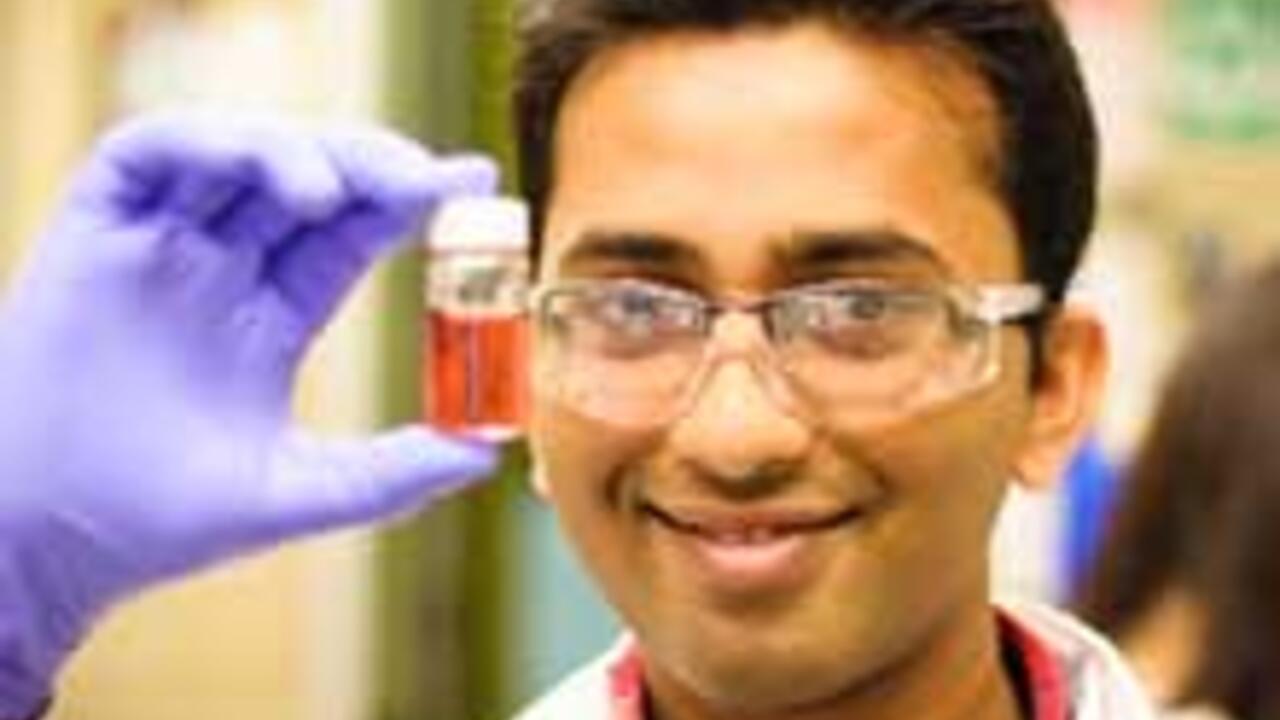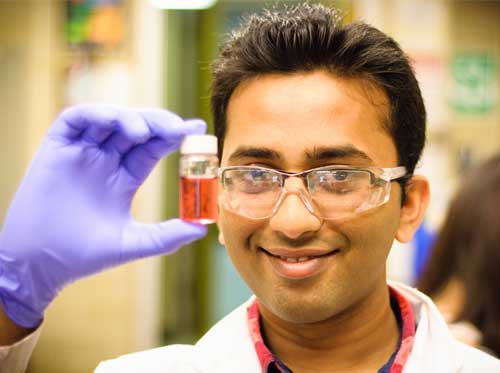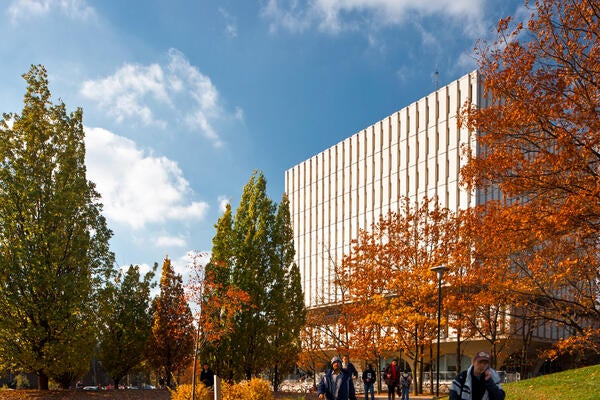
New Waterloo grad lands in world-renowned lab
While at Waterloo, Mohit Verma investigated the use of gold nanoparticles to detect harmful bacteria on contact lens cases

While at Waterloo, Mohit Verma investigated the use of gold nanoparticles to detect harmful bacteria on contact lens cases
By Suzanne Bowness Marketing and Strategic CommunicationsMohit Verma graduates this fall but he has already taken up a post-doctoral research position in a renowned lab at Harvard University, supported by a prestigious Banting fellowship. Verma credits his experiences at Waterloo with helping to set him on his successful research path in George Whitesides Research Group at Harvard.
“I think Waterloo has basically shaped my whole career. I've spent so much time here and had so many different experiences,” says Verma.

Starting out as a student in Waterloo’s Bachelor of Applied Science in Nanotechnology Engineering program, Verma sampled a couple of different co-op placements before taking up a position as an undergraduate research assistant for Chemical Engineering Professor Frank Gu. At the time, Gu was just setting up his lab and Verma was one of his first students. It was there that Verma realized how much he loved lab research. “I really enjoyed the independence, and Professor Gu treated me like a colleague,” says Verma.
“I enjoy solving important problems. I like that it will actually have an impact on people’s lives.”
Verma started his PhD right after he finished his undergraduate degree in 2012, winning a Vanier Canada Graduate scholarship. Towards the end of his PhD, he spent four months in Australia on an Endeavour fellowship. He’s also published 14 papers and has four provisional patents.
You don’t need a PhD to understand the potential impact of Verma’s work: his doctoral project investigated the use of gold nanoparticles to detect harmful bacteria on contact lens cases.
“People don't clean out their cases often and can get eye infections because the bugs from the case can go onto their eyes,” explains Verma.
His solution involves incorporating nanoparticles to create a case that would change colour if bacteria were present, a clear warning signal to the user.
Verma and his colleagues have already started investigating the technology’s use in other fields, for example to detect bacteria on spoiling food or in hospitals. At Harvard, Verma will continue his work investigating low-cost health diagnostics, although using other technologies.
While the lab may be his favourite place, Verma’s is also motivated by projects with real-world potential.

Read more
Meet five exceptional Waterloo graduate students crossing the convocation stage as Class of 2025 valedictorians

Read more
Twenty-six researchers receive federal funding to drive discovery, innovation and research infrastructure development

Read more
The Royal Society of Canada welcomes five new fellows and one RSC College member from the University of Waterloo
The University of Waterloo acknowledges that much of our work takes place on the traditional territory of the Neutral, Anishinaabeg, and Haudenosaunee peoples. Our main campus is situated on the Haldimand Tract, the land granted to the Six Nations that includes six miles on each side of the Grand River. Our active work toward reconciliation takes place across our campuses through research, learning, teaching, and community building, and is co-ordinated within the Office of Indigenous Relations.